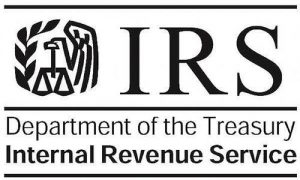
What are the exemptions to FIRPTA?
If property is owned by a US Citizen or Resident Alien (green card holder) there is no FIRPTA withholding required.
If seller is a foreign person there can be an exemption to FIRPTA withholding, but the transaction must qualify. If seller believes they are entitled to an exemption, they should contact their tax attorney or CPA immediately before considering selling property. The exemption process can be lengthy and very specific documentation must be provided to the IRS before seller learns if they have been approved for an exemption.
What if seller believes they qualify for a FIRPTA exemption?
If seller believes they do not have any tax liability, they may be able to obtain an exemption. One example would be if they purchased the property at a higher price and now have a capital loss on the property. In order to obtain an exemption, they would complete IRS form 8288B (application for Exemption/Withholding Certificate). This form can be submitted by the seller prior to closing or at closing to the title company so it can be sent to the IRS. If seller is simultaneously applying for an ITIN, these forms should be sent together.
The escrow company will still keep 15% withholding tax in escrow pending receipt of the Exemption Certificate. The IRS can issue a Withholding Certificate specifying that no withholding is required or a reduced amount of withholding is necessary. This may arise when the taxes due on the seller’s gain will be less than 15% of the sales price.
What if seller does not have an ITIN (Individual Tax Identification Number)?
If seller does not have an ITIN they must obtain one by completing IRS form W-7 (application for ITIN). It can be completed and sent with the withholding funds at closing.
What if buyer does not have an ITIN?
If buyer does not have an ITIN they must obtain one by completing IRS form W-7 (application for ITIN). Since buyer is responsible for collecting withholding funds from seller and remitting this to IRS, buyer needs to have their own ITIN to complete the forms.
NO FIRPTA WITHHOLDING TAX IS REQUIRED IF:
1. sales price of property is under $300,000 and
2. buyer to occupy property as their primary residence
(buyer or a member of their family has definite plans to reside in property for at least 50% of the number of days the property is used during each of the first two years following the date of purchase)
For a FIRPTA exemption if seller is a foreign person, answers to both questions must be YES.
When to file:
If all documents are completed and buyer has withheld 15% of sale price from seller, buyer must file form 8288 and transmit tax withheld to IRS by 20th day after date of purchase.
Failure to provide complete and necessary forms could cause penalties and interest to accrue against buyer.
Where to file:
Send form 8288 and amount withheld to:
IRS – FIRPTA Division
PO Box 409101
Ogden, UT 84409
Always check www.irs.gov before sending any forms to have current form version and current mailing address for IRS.
Are there penalties for failure to withhold?
Penalty starts with a $10,000 fine for failure to collect tax and file forms on time. There can be additional interest and penalties added to that.
How can seller obtain a withholding certificate?
Buyer or seller may apply for a withholding certificate. Normally it will be seller’s responsibility to obtain withholding certificate and provide it to buyer to avoid withholding.
The IRS generally acts on a withholding certificate request (form 8288-B) within 90 days after receipt of request so this should be obtained as soon as seller decides to sell the property.
Can escrow be closed by holding 15% from seller’s proceeds while seller obtains withholding certificate?
If buyer and seller specifically instruct that buyer will hold funds from seller and permit seller time to apply for withholding, this should be done only after consultation with buyer’s and seller’s tax attorney or CPA.




